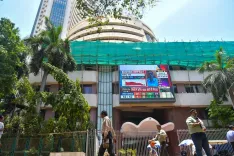How has India’s residential sales increased by nearly 77% since FY 2019?

Synopsis
Key Takeaways
- India's residential sales surged by 77% from FY 2019 to FY 2025.
- Primary transactions comprised 57% of total sales.
- Luxury housing market is expanding significantly.
- Office leasing is at record levels driven by diverse sectors.
- Technological advancements are reshaping asset management.
New Delhi, June 18 (NationPress) India’s residential real estate sector has experienced a remarkable resurgence in the aftermath of the pandemic. According to a report released on Wednesday, total residential sales in prominent cities have soared by nearly 77 percent from FY 2019 to FY 2025.
Primary transactions, which include homes under construction sold by developers, represented 57 percent of all transactions in FY2025. In contrast, secondary transactions, which involve the resale of properties, accounted for the remaining 43 percent, marking a significant increase from the 38 percent share noted in FY 2019 as per the findings from Grant Thornton Bharat.
The luxury housing market (properties priced above INR 1 crore) has witnessed substantial growth from FY 2019 to FY 2025, fueled by rising incomes, lifestyle changes, and focused efforts from developers.
Furthermore, office leasing saw a significant rebound in FY2025, achieving unprecedented levels. The demand surged due to Global Capability Centers (GCCs), IT/ITES, e-commerce, and flexible workspaces, especially in tier 1 cities and developing tier 2 hubs. The report highlighted that India’s office market exhibits strong absorption rates and positive rental growth.
On the logistics front, the warehousing sector continues to grow, bolstered by initiatives like ‘Make in India’, GST reforms, and the National Logistics Policy.
In FY 2024-25, India recorded 99 real estate transactions worth $6.99 billion. Private equity led the way with $3.15 billion, while public markets garnered nearly $3 billion through IPOs and Qualified Institutional Placements (QIPs).
Technological advancements such as AI, blockchain, smart buildings, and sustainable construction practices are transforming asset development and management. Emerging investment vehicles like real estate tokenisation and SM-REITs are gaining traction.
The report anticipates continuous growth in premium housing, commercial office spaces, logistics infrastructure, and alternative investments, driven by digital innovation, urban decentralization, and heightened investor interest.
“India’s real estate narrative is being redefined—through digital means, sustainability, and inclusivity. The future is poised to be decentralised, tech-enabled, and welcoming to investors,” commented the leadership team at Grant Thornton Bharat.
The report also highlighted strong investor interest, emerging asset classes, and an increase in the adoption of technology and sustainable practices.








